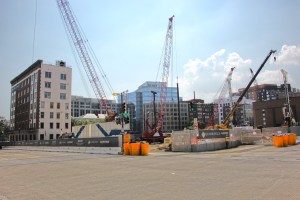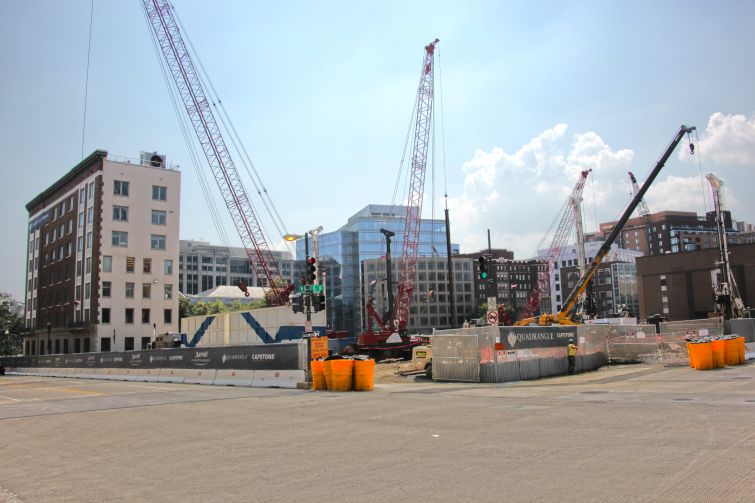 When a building goes up, just about everything else does, too.
When a building goes up, just about everything else does, too.
The number of residential units approved per year has steadily risen over the last five years, carried by the outer boroughs where the demand is higher, according to a New York Building Congress report released today. While residential construction is only expected to climb in response to an affordable housing demand, the numbers are still well below pre-recession levels.
The city’s Department of Buildings approved construction on 20,329 units in 1,513 buildings last year—an 11 percent hike from 2013. Brooklyn carried that performance with 7,550 residential units in 448 buildings last year, according to the report due out today, making it one of the densest areas in which to build.
“For all these decades of Brooklyn languishing as a residential location…the demand was never as high as it is now,” said Richard Anderson, the president of the Building Congress. “There’s a lot of room for development and redevelopment.”
Long an area to find cheaper rents than Manhattan, Brooklyn has taken over as the city’s hot spot with the capacity to redevelop plenty of spots, he said.
Manhattan and Queens followed that up with 5,281 units and 4,900 units, respectively, and the Bronx trailed behind with 1,885 units. Staten Island had the fewest construction units at 712, but the highest average construction cost at $170,300 because many are one-to-two family homes.
The Building Congress expects the number of permits to increase to 24,000 by next year, Mr. Anderson said, as Mayor Bill de Blasio pushes for more affordable housing construction throughout the city. It might mean continued construction growth, he said, but it doesn’t signal a return to the high numbers of 2005 to 2008—when construction was at its highest—as the price of land continues to rise and fewer luxury apartments will be built.
“It’s going to be difficult to get back to 33,000” units in 2008 because of the cause of the land cost, Mr. Anderson said. “I think those days are history.”



